Zion is one of those rare places that is magnificent in many ways, everywhere you turn. This morning we walked from our campsite along the paved bike/hike Pa’rus trail and within a hundred feet spotted some of the wild turkeys that have been reintroduced to the park. Towering red cliffs of red Navajo sandstone surrounded us as we walked through a beautiful field to catch the shuttle bus.
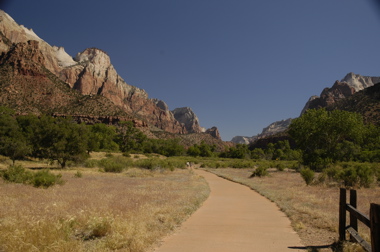
Last night in the ranger talk we learned about how the many arches here (and in Arches National Park, where we were last October), are formed. The red sandstone is porous, and absorbs billions of gallons of rainwater and snowmelt. The water percolates down through the sandstone very slowly, taking centuries to reach a layer of impermeable shale or a fault. There, it emerges from the sandstone, and at that point freeze-thaw cycles cause the sandstone to collapse, leaving arch formations.
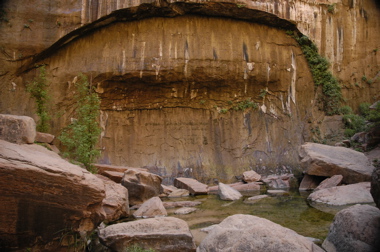
The photo above is an embyronic arch being formed along the Riverside Walk trail. Note the water forming a pool at the bottom. If this cliff were thinner, we might have a walk-through arch in a few thousand years, but this is the base of a mountain of sandstone.
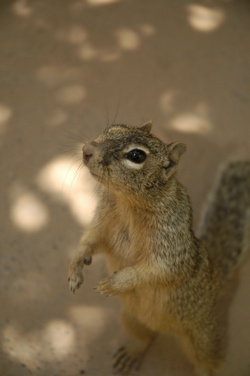
Despite pleas from the rangers, warning signs, and the threat of $100 fines, people still feed the animals and the result is that the squirrels will come right up to you and beg for food. This happens with mule deer too, and eventually they bite people and have to be shot. Even our six-year-old knows better than to feed the “cute animals”. I wish more people would pay attention.

The vertical relief in the canyon is just mind-boggling. Like the California redwoods, this is a challenging place to photograph. Above you can see some climbers working their way up a fissure. They were about 500-600 feet up when I took this photo, and only halfway to their goal!
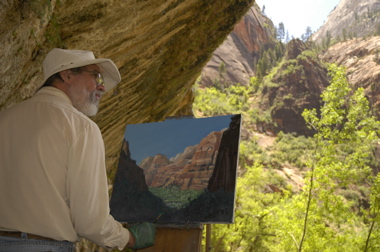
“Weeping rock” is another example of water being squeezed out of the sandstone by an impermeable rock layer. People come up here to stand under a natural alcove where it drips water 24 hours a day, 365 days a year. Spots like this were cool oases in the park as we hiked. The outside temperature was in the 90s, but dipped into the 70s in the shady and damp spots.
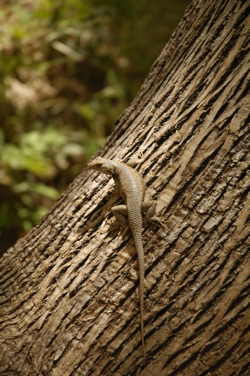
Wildlife is everywhere if you look. We noticed most people never slow down long enough to see. We spotted the wild turkeys, lizards, a Western Red Start (a red-bellied bird, I might have the name wrong), a hummingbird (tried to get nectar from one of the graphics on our trailer!), butterflies, canyon wrens, caterpillars, and of course begging squirrels. They have mountain lions here, in theory, but of course we didn’t see any.
The plan was to resume hiking after lunch but nobody seemed to have the energy. We got back at 2:30 and wilted in the heat. The Virgin River, which flows through this canyon, is running about 52 degrees and too fast for swimming. I fell asleep on the bed after lunch, reading an escapist novel by Tom Clancy and when I awoke at 4:30 nobody seemed to want to go anywhere.
It’s been a nice easy day. We’ve been playing checkers and now Emma is helping Eleanor cook dinner. I’ve promised to make popcorn for the movie later tonight. We’re going to skip the ranger talk because the topic looks a bit dull.
Solar report: we were down 44 amps when we woke up this morning, but generated 30 amps by 2:30, and eventually got back all but 10 amps. Not bad, especially considering we also recharged both laptops and camera batteries. If we didn’t have solar, we’d be killing our batteries by tomorrow night. As is, we can stay indefinitely. I like the fact that now everything electrical that we use (cameras, laptops, lights, pumps, Internet box, cell phones, etc) is powered by the sun.

